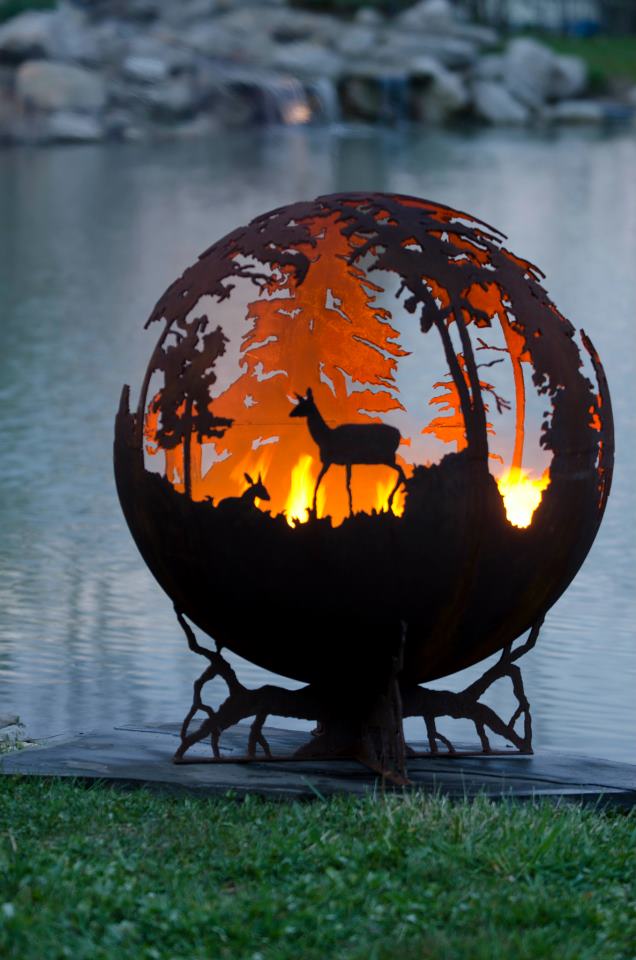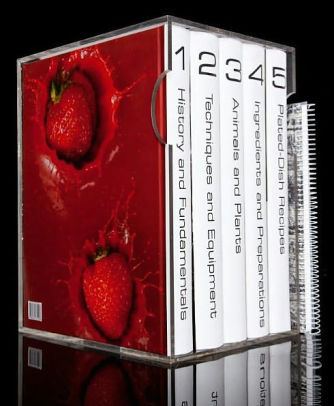Overview
Cooking, cookery, or culinary arts is the art, science, and craft of using heat to prepare food for consumption. The Art and Science of Foodpairing: 10,000 flavour matches that will transform the way you eat Hardcover – September 10, 2020 by Peter Coucquyt (Author), Bernard Lahousse (Author), Johan Langenbick (Author) 86 ratings See all formats and editions. Art and Science of Indian Cooking. Learn how to cook healthy and authentic Indian cooking and understand about spices. More than a cookbook, Preservation: The Art and Science of Canning, Fermentation and Dehydration demystifies the scientific concepts that inform the methods of food preservation in an easy to understand way. Taking Julia Child as her inspiration, certified Master Food Preserver Christina Ward has collected and translated both the scientific and experiential information that has long been the. Nathan Myhrvold is chief executive officer and a founder of Intellectual Ventures, a firm dedicated to creating and investing in inventions.
A revolution is underway in the art of cooking. Just as French Impressionists upended centuries of tradition, Modernist cuisine has in recent years blown through the boundaries of the culinary arts. Borrowing techniques from the laboratory, pioneering chefs at world-renowned restaurants such as elBulli, The Fat Duck, Alinea, and wd~50 have incorporated a deeper understanding of science and advances in cooking technology into their culinary art.In Modernist Cuisine: The Art and Science of Cooking, Nathan Myhrvold, Chris Young, and Maxime Bilet�scientists, inventors, and accomplished cooks in their own right�have created a six-volume 2,400-page set that reveals science-inspired techniques for preparing food that ranges from the otherworldly to the sublime. The authors�and their 20-person team at The Cooking Lab�have achieved astounding new flavors and textures by using tools such as water baths, homogenizers, centrifuges, and ingredients such as hydrocolloids, emulsifiers, and enzymes. It is a work destined to reinvent cooking.How do you make an omelet light and tender on the outside, but rich and creamy inside? Or French fries with a light and fluffy interior and a delicate, crisp crust that doesn�t go soggy? Imagine being able to encase a mussel in a gelled sphere of its own sweet and briny juice. Or to create a silky-smooth pistachio cream made from nothing more than the nuts themselves.
 Modernist Cuisine offers step-by-step, illustrated instructions, as well as clear explanations of how these techniques work. Through thousands of original photographs and diagrams, the lavishly illustrated books make the science and technology of the culinary arts clear and engaging. Stunning new photographic techniques take the reader inside the food to see cooking in action all the way from microscopic meat fibers to an entire Weber grill in cross-section. You will view cooking�and eating�in a whole new light. A sampling of what you�ll discover:
Modernist Cuisine offers step-by-step, illustrated instructions, as well as clear explanations of how these techniques work. Through thousands of original photographs and diagrams, the lavishly illustrated books make the science and technology of the culinary arts clear and engaging. Stunning new photographic techniques take the reader inside the food to see cooking in action all the way from microscopic meat fibers to an entire Weber grill in cross-section. You will view cooking�and eating�in a whole new light. A sampling of what you�ll discover:• Why plunging food in ice water doesn�t stop the cooking process;
• When boiling cooks faster than steaming;
• Why raising the grill doesn�t lower the heat;
• How low-cost pots and pans can perform better than expensive ones;
• Why baking is mostly a drying process;
• Why deep-fried food tastes best and browns better when the oil is older;
• How modern cooking techniques can achieve ideal results without the perfect timing or good luck that traditional methods demand.
Many invaluable features include:
• Insights into the surprising science behind traditional food preparation methods such as grilling, smoking, and stir-frying;
• The most comprehensive guide yet published on cooking sous vide, including the best options for water baths, packaging materials, and sealing equipment; cooking strategies; and troubleshooting tips;
• More than 250 pages on meat and seafood and 144 pages on fruits, vegetables, and grains, including dozens of parametric recipes and step-by-step techniques;
• Extensive chapters explaining how to achieve amazing results by using modern thickeners, gels, emulsions, and foams, including example recipes and many formulas;
• Some 300 pages of new recipes for plated dishes suitable for service at top-tier restaurants, plus recipes adapted from master chefs including Grant Achatz, Ferran Adri�, Heston Blumenthal, David Chang, Wylie Dufresne, David Kinch, and many others.
From the professional chef to the home cook, Modernist Cuisine is an indispensable guide for anyone who is passionate about the art and science of cooking.
With changes in how we cook and eat the fields of culinary arts and culinary science appear now to be merging into one. Many famous restaurant now have cooking laboratories on their premises, while universities and colleges around the country are beginning to offer degrees in culinology ( a degree program that blends food science and technology with culinary art).
Interest in food science has grown in recent years because of the increasing awareness of the vital role of food in the health, well-being, and economic status of individuals and nations and people's curiosity and desire to try new and innovative food dishes. Food science is the study of the chemical composition of food and food ingredients; their physical, biological and biochemical properties and and the interaction of food constituents with each other and their environment.

What is Molecular Gastonomy?
Molecular Gastronomy is the application of scientific principles to the understanding and improvement of small scale food preparation. The term was invented by the Hungarian physicist Nicholas Kurti in a 1969 presentation to the Royal Institution called 'The Physicist in the kitchen', and popularized by his collaborator the French scientist Hervé This.
Heston Blumenthal, 38, is presently at the forefront of this radical style of cooking (molecular gastronomy). His triple Michelin starred restaurant The Fat Duck serves dishes like sardine-flavored sorbet, pasta made out of Jello, snail porridge, or a puree of mango and Douglas fir. At El Bulli, the restaurant of Ferran Adria in Spain another molecular gastronomist dishes consist of monkfish liver with tomato seeds and citrus or barnacles with tea foam, or a parmesan cheese ice cream. During the six months his restaurant is closed, Adrià works on new recipes in a laboratory near the Barcelona market.
At restaurant Arzak in San Sebastian, Juan Mari Arzak and his daughter Elena experiment with their chefs on a daily basis. Upstairs from the restaurant you will find a small food laboratory with pH meters, sonicators and liquid nitrogen.
EGG AND TRUFFLE FLOWER IN GOOSE FAT WITH CHISTORRA (chorizo sausage) OF DATES From Restaurante Arzak Restaurant Everyday we experiment and investigate with the flavours, textures and elaboration's processes. Besides the investigation's kitchen there is a 'Flavour Bank', that contains more than 1000 products and ingredients we use to their investigations and for the new creations -- -- Juan Mari Arzak |
Pino Maffeo of Boston's Restaurant L uses liquid nitrogen, emulsifiers and an arsenal of equipment typically found in scientific laboratories, Maffeo creates what he calls 'one-bite wonders.' 'If science can make my cuisine better, then I'll use it,' he said, while putting ravioli made from mango and dry cured ham on skewers alongside aloe vera and muscato grape juice gelatin cubes.
To create unusual and original recipes -- such as pairing fried calamari with watermelon and cantaloupe -- Maffeo analyzes the molecular make-up of the ingredients with an infrared spectrometer nuclear magnetic resonance machine, equipment usually used by synthetic chemists and physicists. He believes foods with similar composition pair well together. He meets weekly to discuss projects with Angela Buffone, a visiting professor of organic chemistry at Suffolk University and partner in Maffeo's culinary experiments. For his signature dish, seared foie gras with a 24 carat golden egg, MDDWO uses liquid nitrogen to flash freeze an airy meringue that has been dipped in lightly whipped cream to create a texture resembling an egg shell. Then using a syringe he injects mango sauce into shell. See full text article by Mark Wilson
Experimental Chefs and restaurants
- The Fat Duck (Heston Blumenthal) - UK
- Pierre Gagnaire (Pierre Gagnaire) - France
- El Bulli (Ferran Adria) - Spain
- Grand Hotel Villa Serbellione (Ettore Bocchia) - Italy
- Saint Pierre (Emmanuel Stroobant) - Singapore
- Juan Mari Arzak, San Sebastian - Spain
- Chef Thomas Keller, whose French Laundry (California)
Further Reading
New York Times Articles -- A Laboratory of Taste

Science of Cooking --Explore recipes, activities, and Webcasts that will enhance your understanding of the science behind food and cooking.

Food: his passion, his science --Hervé This, a French researcher, helps chefs around the world really sizzle
Food Nutrition and Information Center -- The Food and Nutrition Information Center (FNIC) at the National Agricultural Library (NAL) has been a leader in food and human nutrition information dissemination since 1971.
Molecular gastronomy and the science of cooking -- Large selection of books and articles from Martin Lersch Department of Chemistry P.O.Box 1033, Blindern 0315 Oslo, NORWAY
Bertand Simon, Sciences can help us with better cooking articles in french.
New degree programs produce chef-scientists -- Culinology™ is the blending of the culinary arts and the science of food -- The Associated Press
The Art And Science Of Cooking
The Research Chefs Association is the leading professional community for food research and development. Its members are the pioneers of the discipline of Culinology®
Modern Cuisine The Art And Science Of Cooking
|